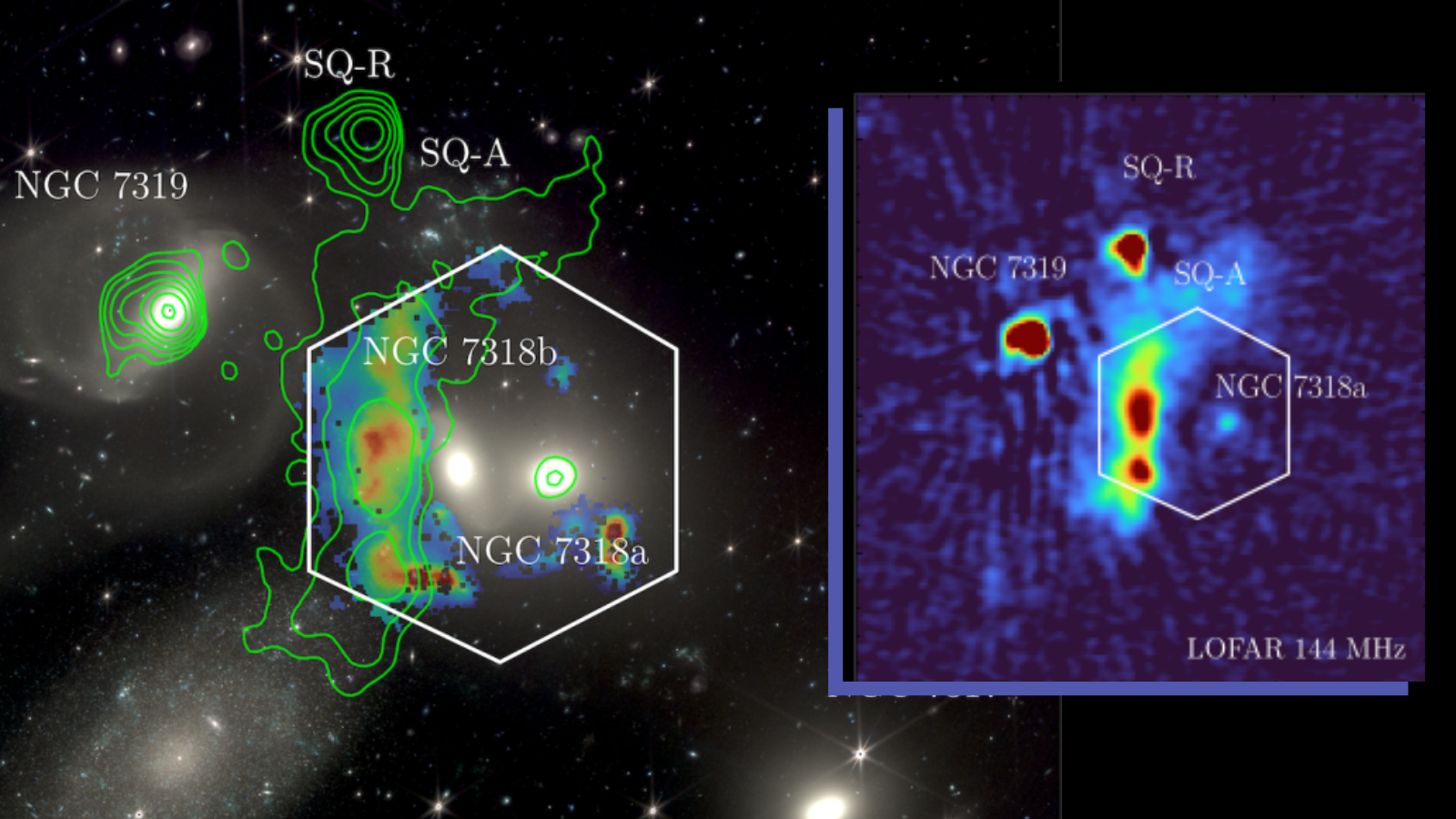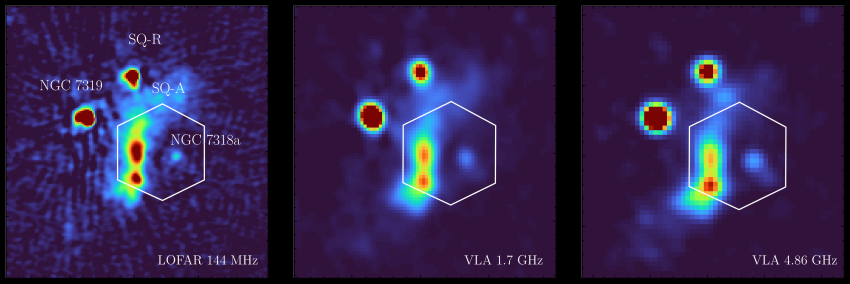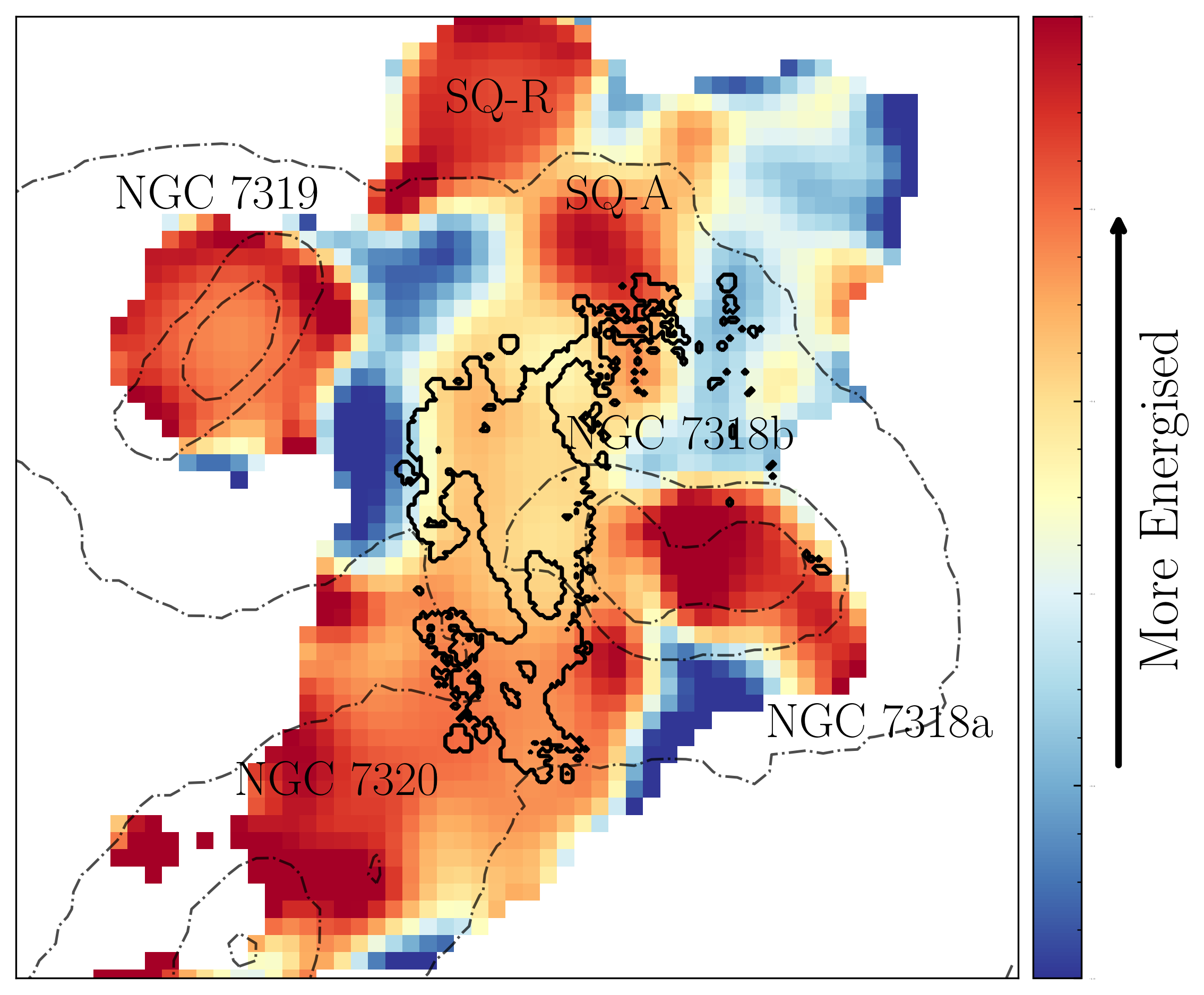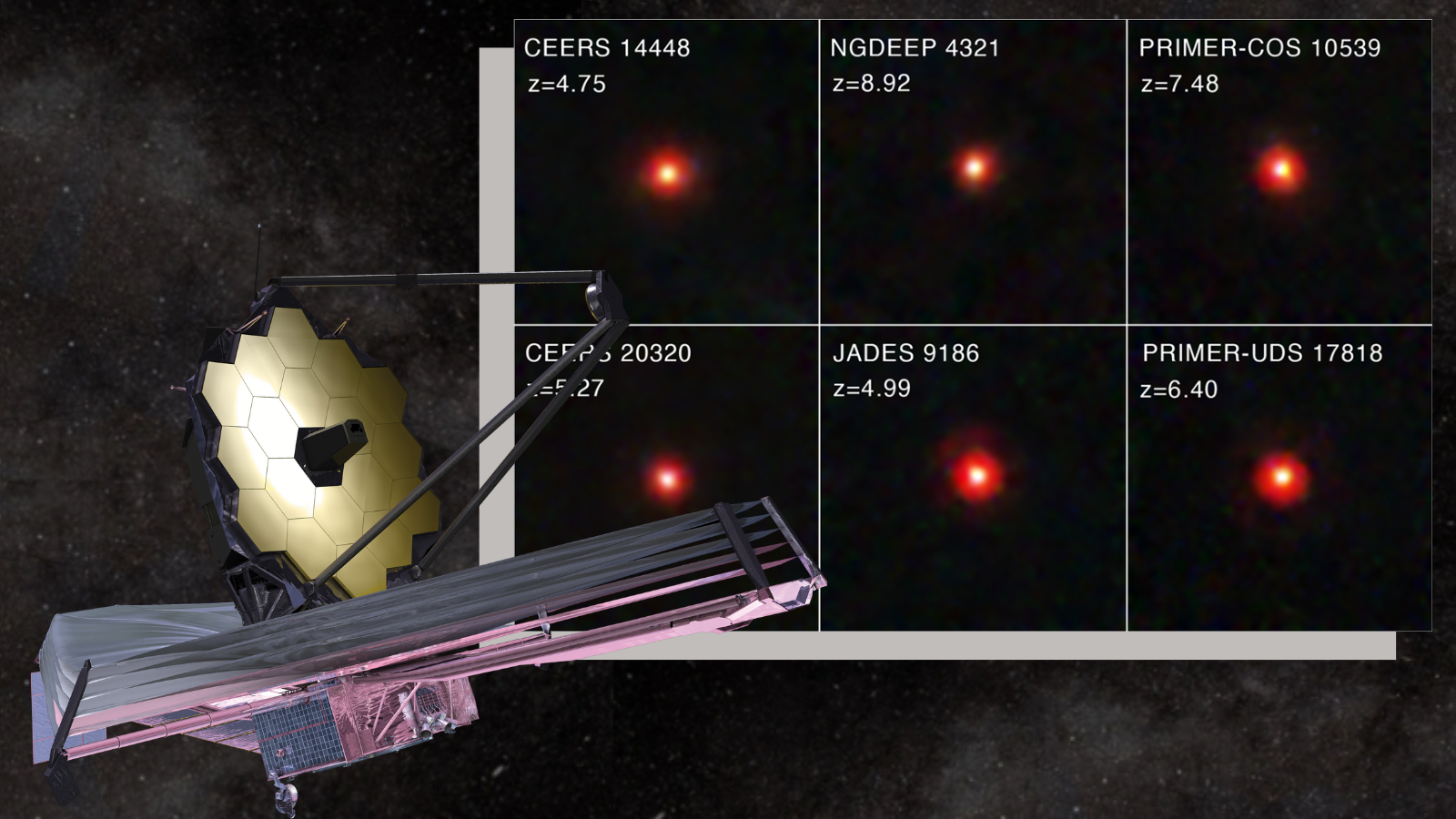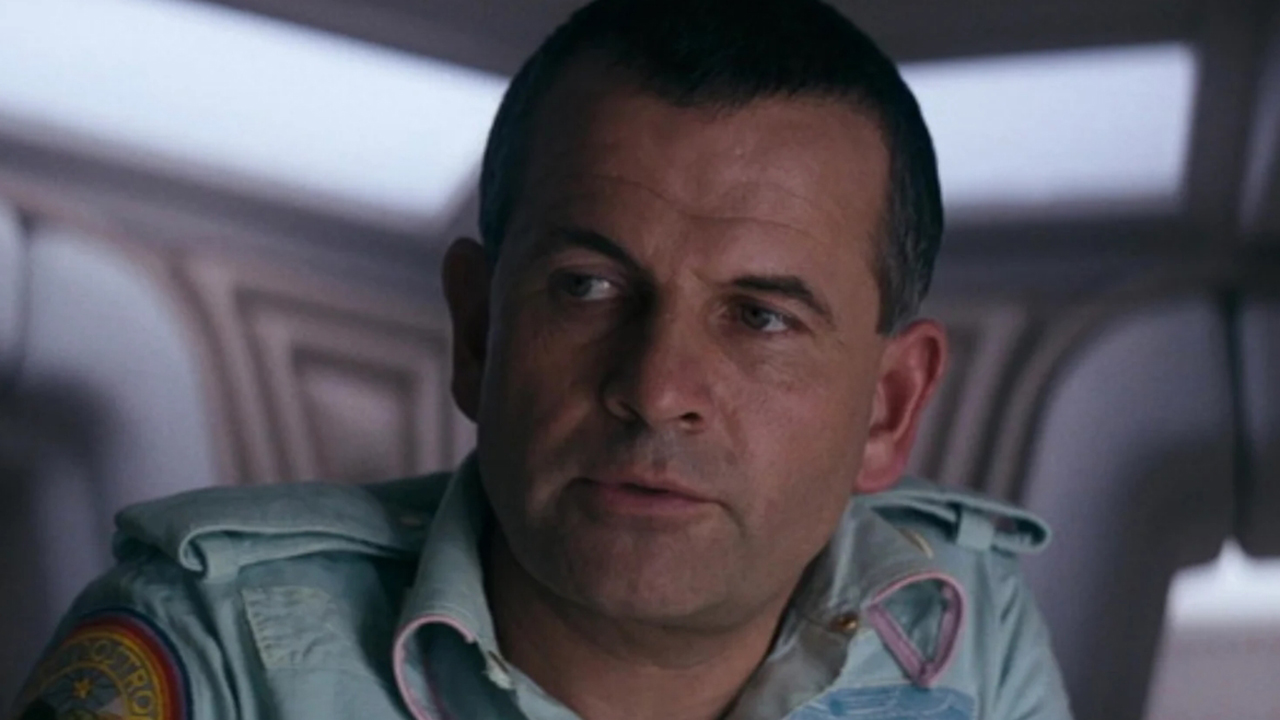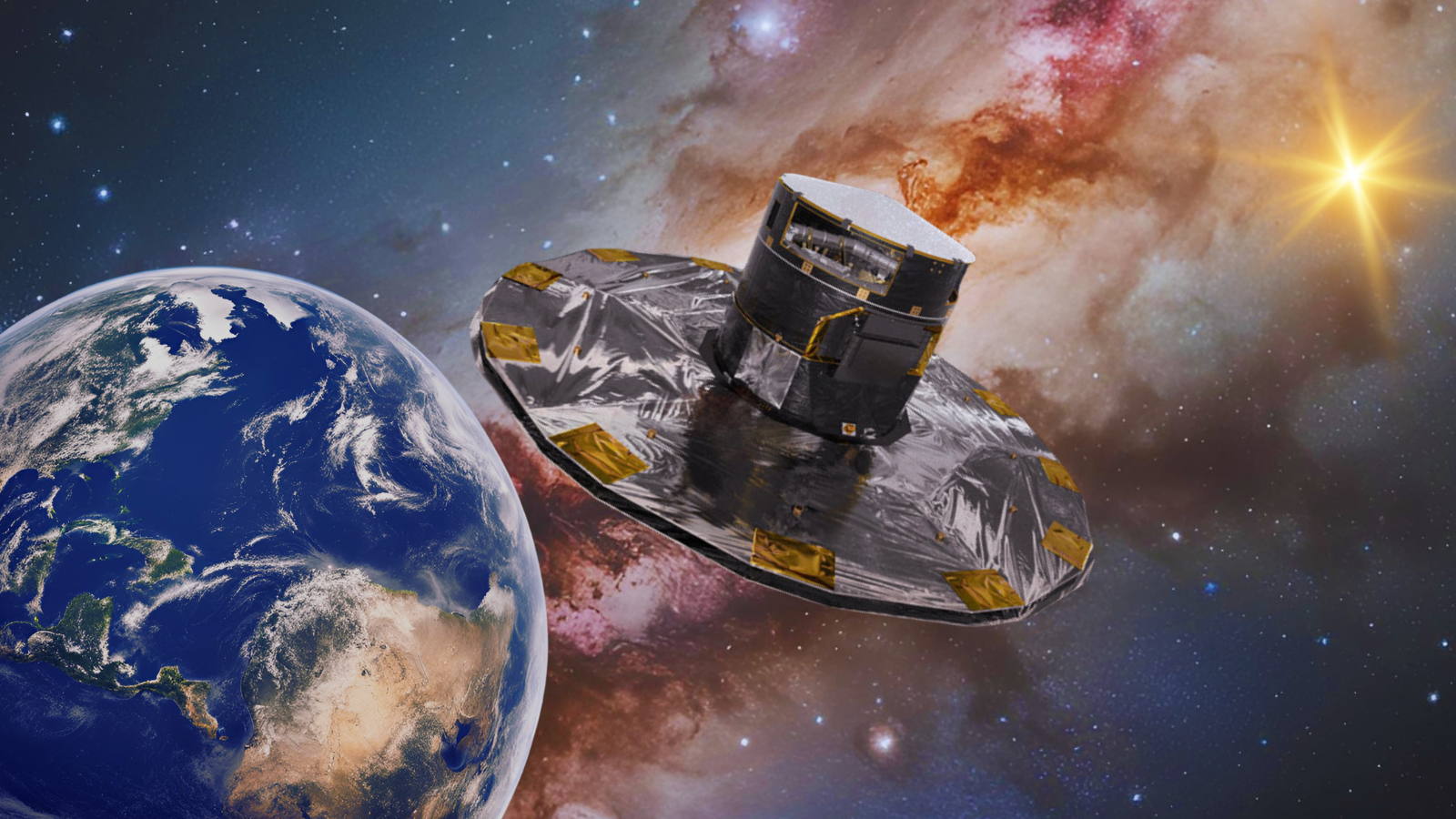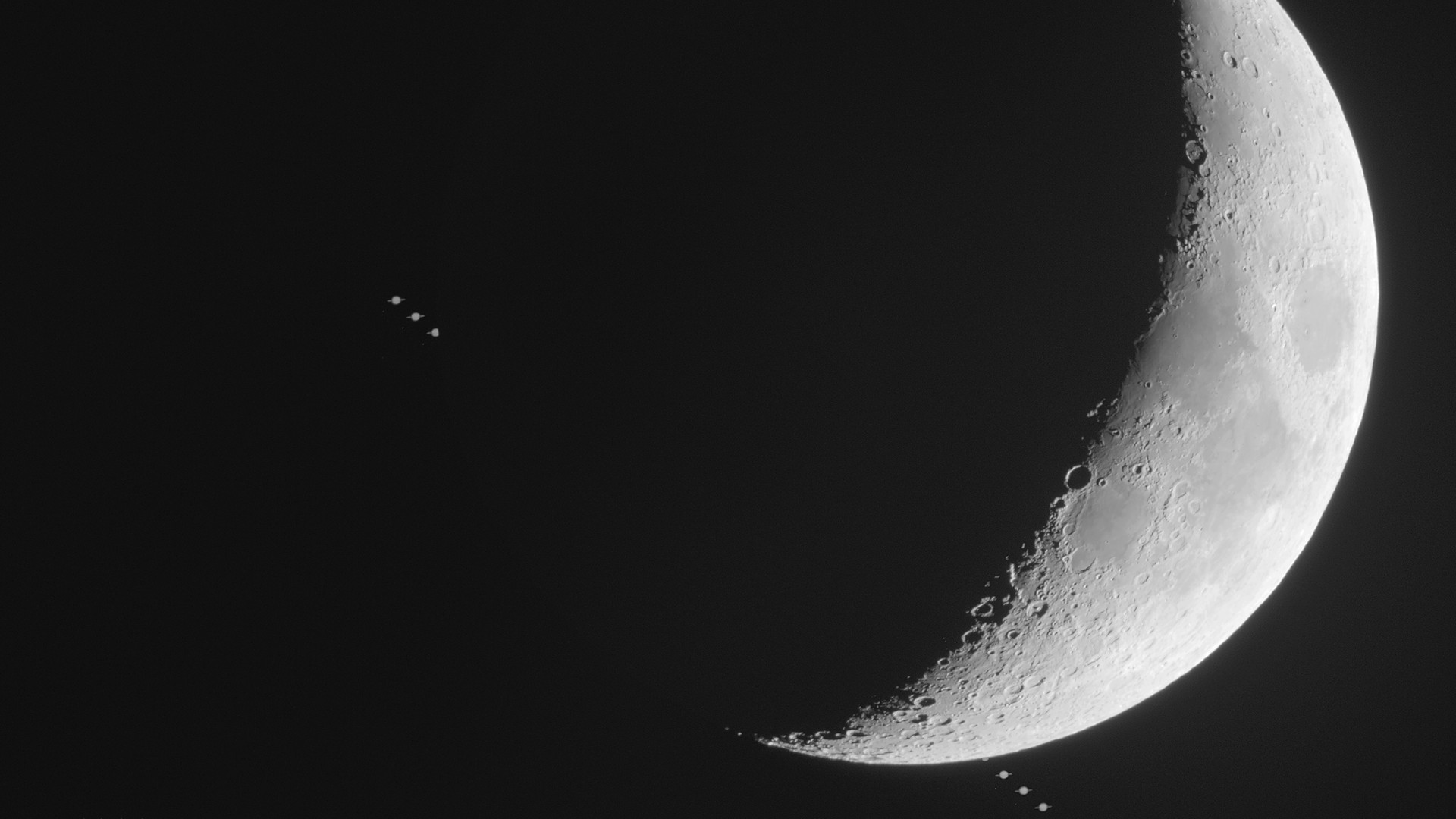Using one of the most powerful telescopes on Earth, astronomers have witnessed an intimidating 2-million-mile-per-hour (3.2-million-kilometer-per-hour) smash-up between galaxies at a dangerous “cosmic crossroads,” the site of multiple previous collisions.
The collision occurred when the galaxy NGC 7318b ripped through the site of previous galactic smash-ups, a galactic grouping called “Stephan’s Quintet.” The impact created a powerful shockwave in this complex field of cosmic debris that “reawakened” the quintet.
A team of over 60 astronomers spotted the collision using the William Herschel Telescope Enhanced Area Velocity Explorer (WEAVE) wide-field spectrograph attached to the William Herschel Telescope in La Palma, Spain. The crew combined these observations with data from the James Webb Space Telescope (JWST) and the Low-Frequency Array (LOFAR) to investigate the collision site. Such an investigation could help reveal how galaxies like the Milky Way are built up by violent events and mergers over billions of years.
“Since its discovery in 1877, Stephan’s Quintet has captivated astronomers because it represents a galactic crossroad where past collisions between galaxies have left behind a complex field of debris,” Marina Arnaudova, team leader and a University of Hertfordshire researcher, in a statement. “Dynamical activity in this galaxy group has now been reawakened by a galaxy smashing through it at an incredible speed of over 2 million mph (3.2 million km/h), leading to an immensely powerful shock, much like a sonic boom from a jet fighter.”
The top speed of an SR-71 Blackbird jet fighter is Mach 3.4, or just over 2,500 mph (4,023 kph). That means that the galaxy NGC 7318b was actually outpacing a jet fighter by around 800 times. The shock front seen by the team also has a curious dual nature.
Arnaudova explained that, as the shock moves through pockets of cold gas or the “intergalactic medium” of Stephan’s Quintet at hypersonic speeds, it is powerful enough to rip electrons away from atoms. This leaves in its wake a glowing trail of charged gas, or “plasma,” that is visible with WEAVE.
The traveling shock weakens when it encounters hot gas surrounding the galactic collision site.
“Instead of causing significant disruption, the weak shock compresses the hot gas, resulting in radio waves that are picked up by radio telescopes like LOFAR,” Soumyadeep Das, a University of Hertfordshire scientist, said in the statement.
WEAVE principal investigator and University of Oxford researcher Gavin Dalton praised the level of detail attained in the instrument’s observations of Stephan’s Quintet.
“As well as the details of the shock and the unfolding collision that we see in Stephan’s Quintet, these observations provide a remarkable perspective on what may be happening in the formation and evolution of the barely resolved faint galaxies that we see at the limits of our current capabilities,” he said.
The results are a tantalizing preview of how WEAVE could collaborate with space telescopes like the JWST to improve our views of faint galaxies.
“I’m excited to see that the data gathered at the WEAVE first light already provide a high-impact result, and I’m sure this is just an early example of the types of discoveries that will be made possible with WEAVE on the William Herschel Telescope in the coming years,” Marc Balcells, director of the Isaac Newton Group of Telescopes, said in the statement.
The team’s results were published on Friday (Nov. 22) in the journal Monthly Notices of the Royal Astronomical Society.

